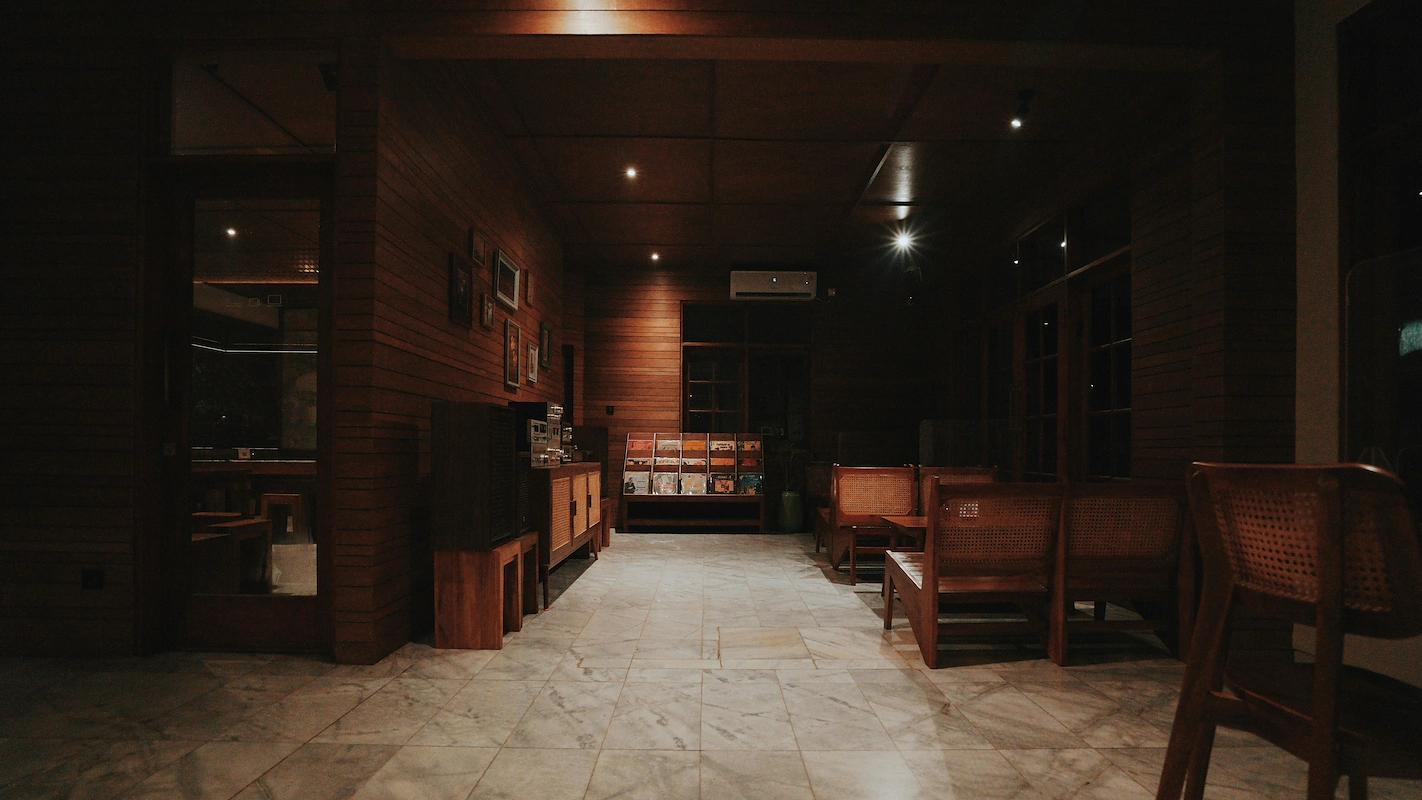Starting a salon suite business is a rewarding venture that blends a passion for the beauty industry with sharp business savvy. The model offers a clear path to steady income as more beauty professionals seek independence, but this accessibility doesn't guarantee an easy road to success.
This guide will take you through the practical steps of validating your concept, securing funding, selecting the right location, and obtaining necessary permits to help you launch a successful salon suite business in the U.S.
Step 1: Plan your business and validate your concept
To begin, research your local market to confirm there is enough demand. Use U.S. Census Bureau data to analyze neighborhood demographics and income levels. This helps you define your target tenant. Also, survey 10-15 local beauty professionals to learn what they want in a suite rental.
Once you have a feel for the market, analyze your direct competition. Use Google Maps and commercial real estate sites like LoopNet to find all salon suites in your target area. Many new owners just compare rental prices, but you should also note their amenities and online reviews to find a gap.
Understand your startup costs
A detailed budget is your next move. The build-out is the largest variable, often from $50,000 to over $250,000. This figure depends heavily on the initial condition of the space you lease, so it requires careful planning to manage this part of the investment effectively.
Other major costs include a lease deposit ($5,000-$15,000), common area furniture ($10,000-$30,000), and initial marketing ($2,000-$10,000). Budget another $2,000-$7,000 for professional services like legal and accounting to get started on the right foot.
Here are 3 immediate steps to take:
- Survey at least 10 local beauty professionals about their ideal suite features and price points.
- Map all competitors within a 5-mile radius and create a spreadsheet of their amenities.
- Draft a preliminary budget with low and high estimates for your total startup costs.
Step 2: Set up your legal structure and get licensed
Most salon suite owners form a Limited Liability Company (LLC). This structure protects your personal assets if the business faces a lawsuit. You can also elect for S Corp tax status later to potentially lower your self-employment taxes as profits grow.
First, get a free Employer Identification Number (EIN) from the IRS website, which you need for taxes and banking. Next, contact your State Board of Cosmetology to apply for a Salon or Establishment License. This typically costs between $100 and $300.
Many new owners think their tenants' individual licenses are enough. However, your business itself needs its own establishment license from the state board. This is a separate requirement that proves your facility meets health and safety standards for operation.
Your city or county will also require a general business license. You must secure a Certificate of Occupancy (CO) for your physical space, which confirms the building is safe and up to code. Expect this to cost $100-$500 and take several weeks to process.
Here are 4 immediate steps to take:
- File for an LLC with your Secretary of State.
- Apply for a free EIN on the IRS website.
- Check your State Board of Cosmetology website for establishment license forms.
- Contact your local planning department about the Certificate of Occupancy process.
Step 3: Secure your insurance and manage risk
Your business needs several layers of protection. A Business Owner's Policy (BOP) is a good start, as it bundles General Liability and Commercial Property insurance. General Liability covers accidents in common areas, while property insurance protects your build-out and assets.
Expect to need at least $1 million in general liability coverage, with annual premiums from $500 to $1,200. Commercial property coverage should match your build-out value, costing around $1,000 to $3,000 per year. If you hire staff, you must also have Workers' Compensation insurance.
A frequent oversight is to assume your tenants' professional liability policies cover your business. They do not. Your business requires its own insurance for the building and common areas. You should mandate in your lease that tenants carry their own liability insurance of at least $1 million.
You might want to consider providers like Hiscox, The Hartford, or Beauty & Bodywork Insurance (BBI). They understand the specific risks of a salon environment, from chemical spills to equipment malfunctions, and can offer more relevant coverage than a general agent.
Here are 3 immediate steps to take:
- Request quotes for a Business Owner's Policy (BOP) that covers at least $1 million in liability.
- Contact insurance providers that specialize in the beauty industry, like Hiscox or The Hartford.
- Draft a lease clause that requires tenants to carry their own professional liability insurance.
Step 4: Find your location and buy equipment
Select and secure your space
Aim for a commercial space between 2,000 and 5,000 square feet, which can typically fit 10-20 suites. Before you sign anything, confirm with your local planning department that the property's zoning allows for "personal services" or salon use.
When you negotiate your lease, push for a Tenant Improvement (TI) allowance. This is a sum the landlord provides to help pay for your build-out. A TI allowance of $25-$50 per square foot can significantly reduce your upfront costs.
Many new owners accept a standard lease. Instead, request a longer term, like 7-10 years, with options to renew. This protects your large investment in the location. Also, ask for an exclusivity clause to prevent the landlord from leasing to another salon suite business in the same center.
Purchase your equipment
With the lease secured, you can buy equipment. Focus on durable, professional-grade items. For each suite, budget for a styling chair ($300-$1,000), shampoo bowl with chair ($500-$2,000), and custom cabinetry ($1,500-$4,000). Common areas need a washer and dryer ($1,000-$2,500).
You can find these items from industry suppliers like Minerva Beauty or Buy-Rite Beauty. They usually do not have minimum order quantities, but you might get a discount for bulk purchases. Avoid the temptation to buy cheap residential-grade furniture, as it will not withstand commercial use.
Here are 4 immediate steps to take:
- Confirm the zoning of potential properties with your city's planning department.
- Ask for a Tenant Improvement (TI) allowance when you negotiate your lease terms.
- Get quotes for styling chairs and shampoo bowls from suppliers like Minerva Beauty.
- Budget for common area items like commercial-grade laundry machines.
Step 5: Set up your payment systems
Most tenants will pay rent monthly. You should set up automated bank transfers (ACH) for this, as it is the most reliable and low-cost method. Also, plan to collect a security deposit, typically equal to one month's rent, before a tenant moves in.
Beyond monthly rent, you will need a way to handle one-off charges. This could be for selling retail products, booking a shared space, or collecting a late fee. Look for a payment solution with low transaction fees and no long-term contracts or extra hardware.
For salon suite businesses that need to accept payments on-site, JIM offers a streamlined solution. With JIM, you can accept debit, credit, and digital wallets directly through your smartphone. Just tap and you are done. It is a simple process.
At just 1.99% per transaction with no hidden costs, it is more affordable than many other providers, which often charge upwards of 2.9%. It is particularly useful for collecting a deposit from a new tenant on the spot or selling extra supplies to stylists.
You can get started quickly:
- Get Started: Download the JIM app for iOS.
- Make a Sale: Type the sales amount, hit sell, and ask your customer to tap their card or device on your phone.
- Access Funds: Your money is available right on your JIM card as soon as the sale is done, with no waiting for bank transfers.
Here are 3 immediate steps to take:
- Choose a primary method for collecting monthly rent, like ACH transfers.
- Download the JIM app to handle on-the-spot payments for deposits or fees.
- Add your payment policies, including due dates and late fees, to your tenant lease agreement.
Step 6: Fund your business and manage finances
Your business plan is the key to getting funded. The SBA 7(a) loan is a popular choice, offering up to $500,000 for build-outs and equipment. Lenders will want to see a credit score over 680, some personal investment, and a detailed financial forecast.
For smaller needs under $50,000, an SBA Microloan can be a good fit. You might also consider equipment financing specifically for your styling chairs and shampoo stations. This often has favorable terms since the equipment itself serves as collateral for the loan.
Calculate your working capital
Many new owners focus on the build-out but run out of cash before they are fully leased. You need a buffer. Plan to have at least six months of operating expenses in the bank. This covers rent, utilities, and marketing while you attract tenants.
For a typical 15-suite location, this could mean setting aside $75,000 to $100,000 just for working capital. This fund is your safety net to ensure smooth operations as you grow. Also, look into grants like the Amber Grant or search your local economic development websites.
Here are 4 immediate steps to take:
- Finalize your business plan to prepare for loan applications.
- Contact an SBA-preferred lender to discuss a 7(a) loan.
- Calculate six months of operating expenses for your working capital target.
- Search your city’s economic development website for small business grants.
Step 7: Hire your team and set up operations
Build your core team
Your first hire should be a part-time Salon Manager or Community Manager. This person gives tours, onboards new tenants, and handles daily facility issues. Their main job is to keep tenants happy. You can budget for $20-$30 per hour for this role, depending on your market.
Many new owners try to manage everything themselves to save money, but this can backfire. A dedicated manager ensures a professional experience, which helps fill vacancies faster. This frees you to focus on marketing and growing the business instead of day-to-day problems.
Streamline your daily operations
You do not need complex salon software. A simple property management app like TenantCloud or DoorLoop works well. These platforms let you track rent payments, handle maintenance requests, and communicate with tenants from a single dashboard, which simplifies your administrative work.
As you staff up, aim to keep your direct payroll costs below 10% of your gross rental income. This financial guardrail helps maintain profitability while you provide great support for your tenants. It is a key metric to watch as you grow.
Here are 4 immediate steps to take:
- Draft a job description for a part-time Salon Manager.
- Compare features of property management apps like TenantCloud and DoorLoop.
- Set a payroll budget that is under 10% of your projected rental income.
- Create a daily checklist for opening, closing, and common area maintenance.
Step 8: Market your suites and attract tenants
Start your marketing early
Begin your marketing push 90 days before you plan to open. Many owners wait until construction is finished, but this leaves them with an empty building on day one. Starting early helps you build a waitlist and secure tenants before your doors even open.
Create professional Instagram and Facebook pages with high-quality photos and virtual tours of the space. Run targeted ads to reach beauty professionals, like hairstylists and estheticians, within a 10-15 mile radius of your location. Your pre-launch marketing budget should be around $2,000-$5,000.
Launch a pre-leasing campaign
Create urgency with an early-bird special. You might offer the first five tenants two weeks of free rent for signing a one-year lease. This tactic can lower your Customer Acquisition Cost (CAC) for those initial leases. A good target is to keep your CAC below one month's rent per tenant.
In addition to social media, list your suites on commercial real estate sites like LoopNet. You can also connect with local beauty supply stores and ask to post a flyer on their community board. Direct outreach is still a powerful way to find your first tenants.
Here are 4 immediate steps to take:
- Create Instagram and Facebook pages for your business.
- Design an early-bird special for your first tenants.
- Set a marketing budget to launch 90 days before opening.
- List your suites on commercial real estate websites like LoopNet.
Step 9: Set your suite rental prices
Start by analyzing competitor pricing. Check their websites, social media, and any public listings to see their weekly rates. Create a spreadsheet to track prices for different suite sizes, noting if they charge extra for utilities or laundry access.
Some owners just match the lowest price they find. This can devalue your space. Instead, price your suites based on the value you offer, like premium finishes or a better location. Your goal is to attract tenants who see the quality, not just a low price.
Choose your pricing model
A flat weekly rent is the most common model. For example, a standard 100-square-foot suite might rent for $300 per week. You might want to consider a tiered model where a larger suite with a window commands a premium, perhaps $375 per week.
Once you are fully leased, a healthy net profit margin is between 20-35% after all expenses are paid. Calculate your break-even point to understand how many suites you must rent to cover your own lease, utilities, insurance, and any staff salaries.
Here are 4 immediate steps to take:
- Create a spreadsheet of competitor rental rates and included amenities.
- Calculate your break-even point based on your monthly operating expenses.
- Decide between a flat-rate or tiered pricing model for your suites.
- Set an initial weekly rental price for each suite size you offer.
Step 10: Maintain quality and scale your business
Set your quality standards
Your main quality metric is tenant happiness. Aim for a tenant retention rate above 90% annually. You can also track this through online reviews and informal check-ins. A happy tenant is your best marketing asset.
Create a daily checklist for your manager. It should include tasks like cleaning common areas, restocking supplies, and checking for maintenance issues. Many owners relax these standards once the suites are full, which can lead to tenant turnover.
Plan your growth
With your quality standards in place, you can plan for expansion. Once you reach 80-85% occupancy, you might want to move your part-time manager to a full-time role. This ensures service quality does not dip as you get busier.
Do not rush into a second location. Wait until your first property is consistently above 95% occupancy with a waitlist of at least 3-5 qualified tenants. This confirms you have strong demand and a proven operational model before you take on more risk.
Here are 4 immediate steps to take:
- Create a daily quality control checklist for your common areas.
- Set a target tenant retention rate of 90% or higher.
- Define the occupancy rate (e.g., 85%) that will trigger hiring a full-time manager.
- Research property management software that can scale to multiple locations.
Conclusion
Your salon suite business is a community first and a property second. Your success is directly tied to the success of your tenants, so focus on providing them with a great space. You have the roadmap, now go build your business.
And for those on-the-spot payments like deposits, a simple solution is key. JIM lets you accept cards right on your smartphone for a flat 1.99% fee, no hardware needed. You can Download JIM and be ready for your first tenant.















